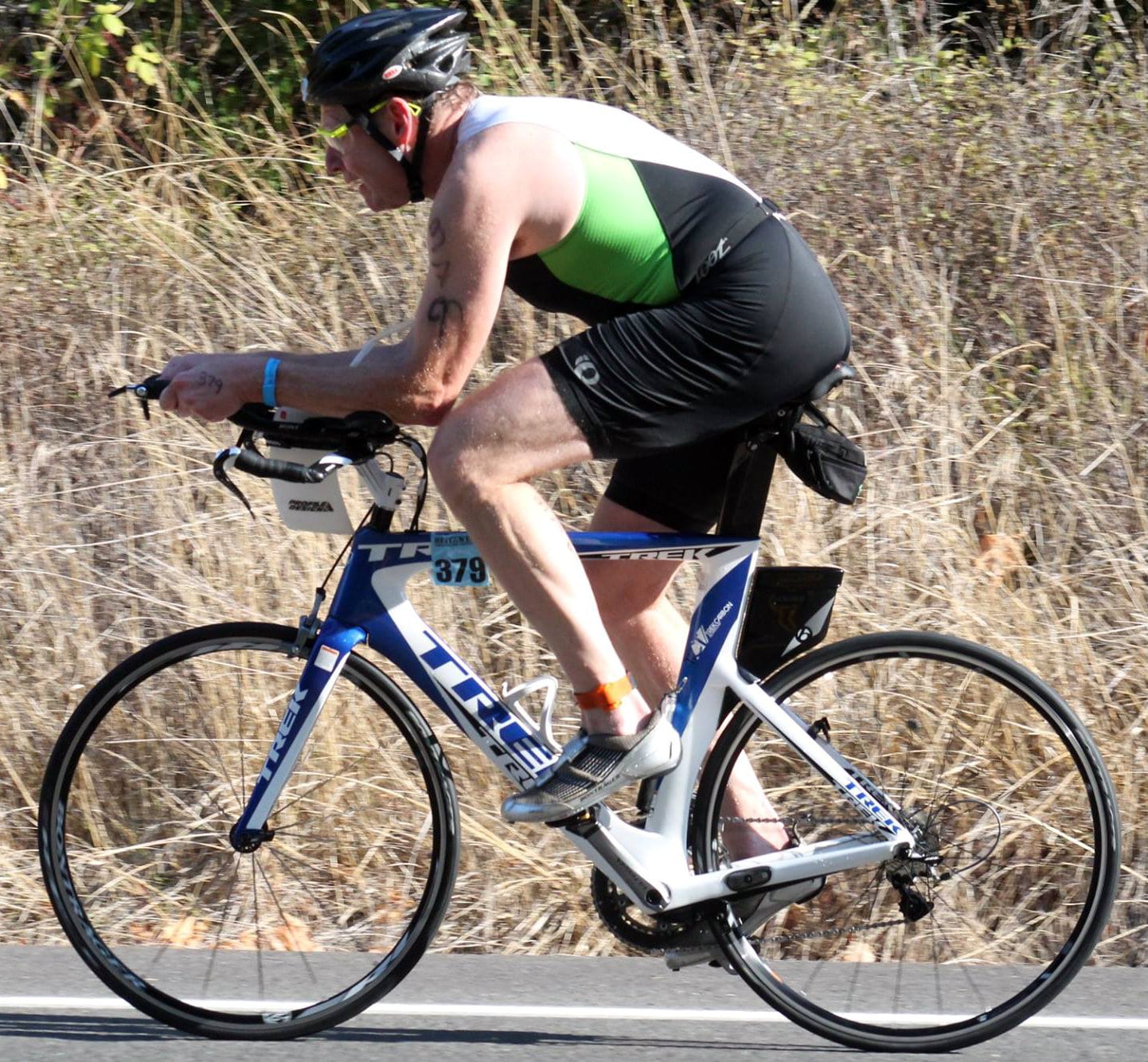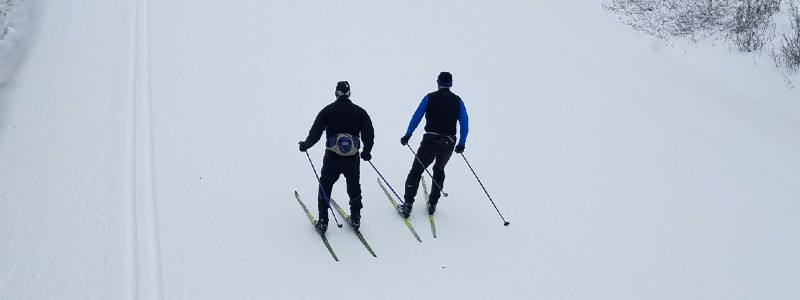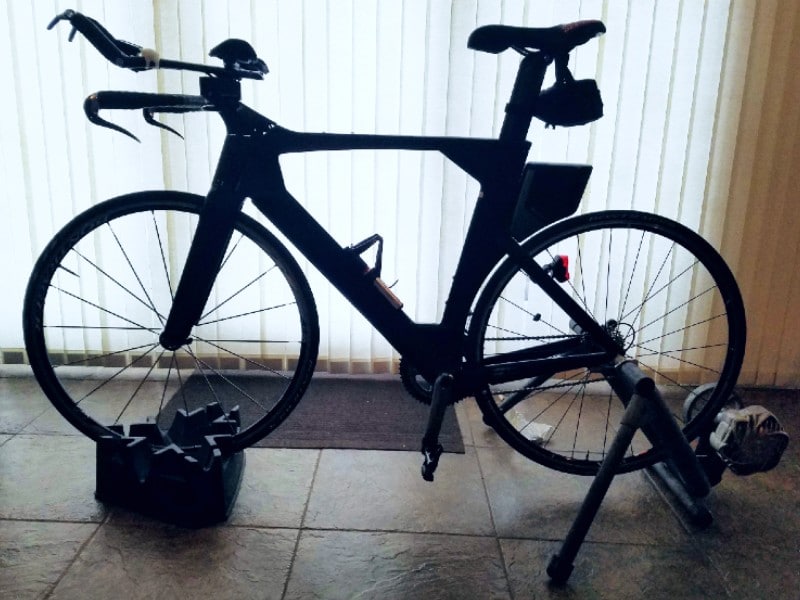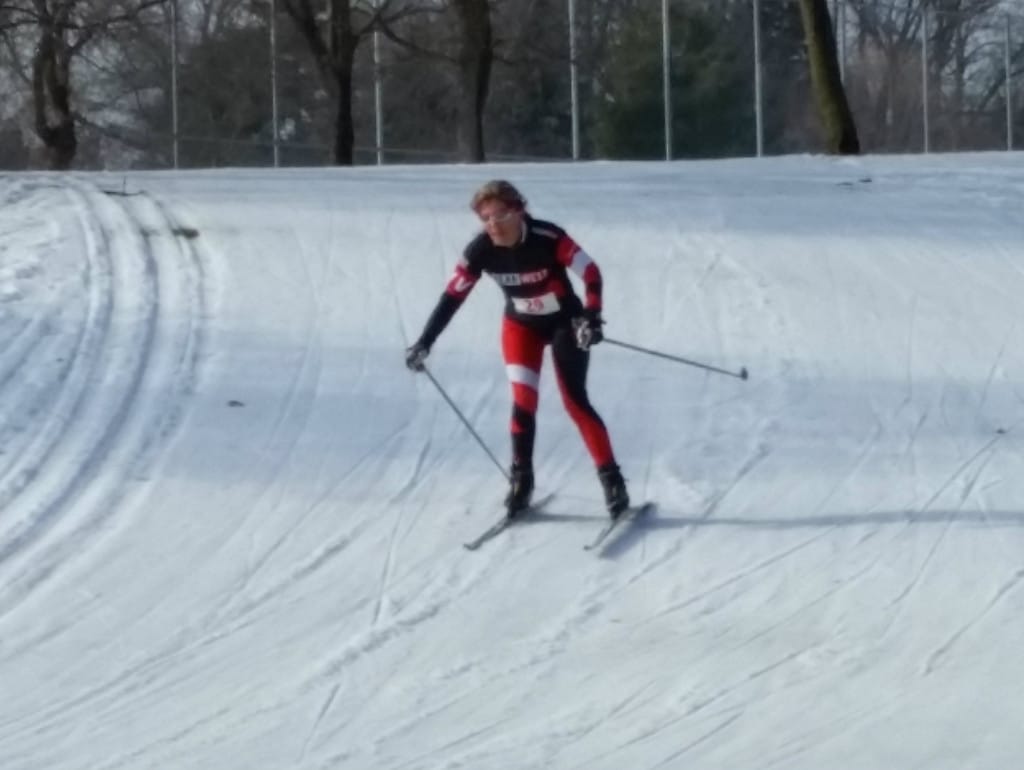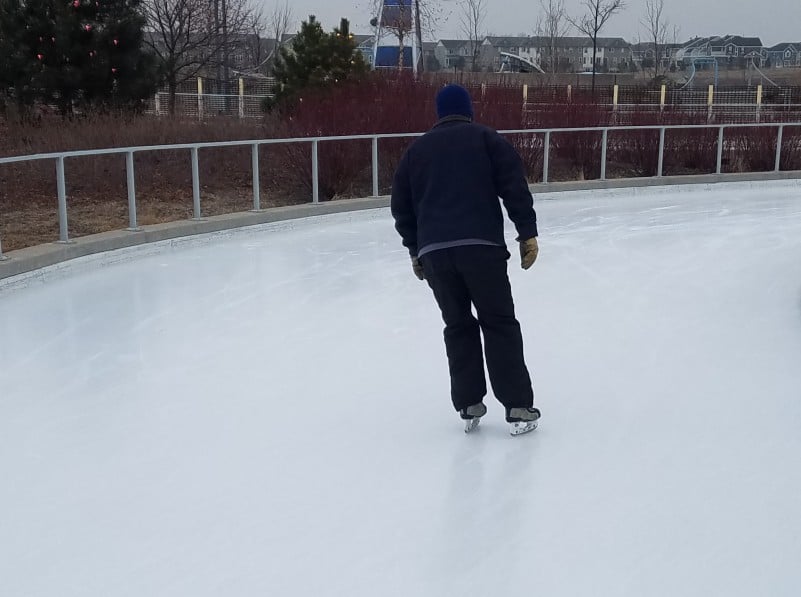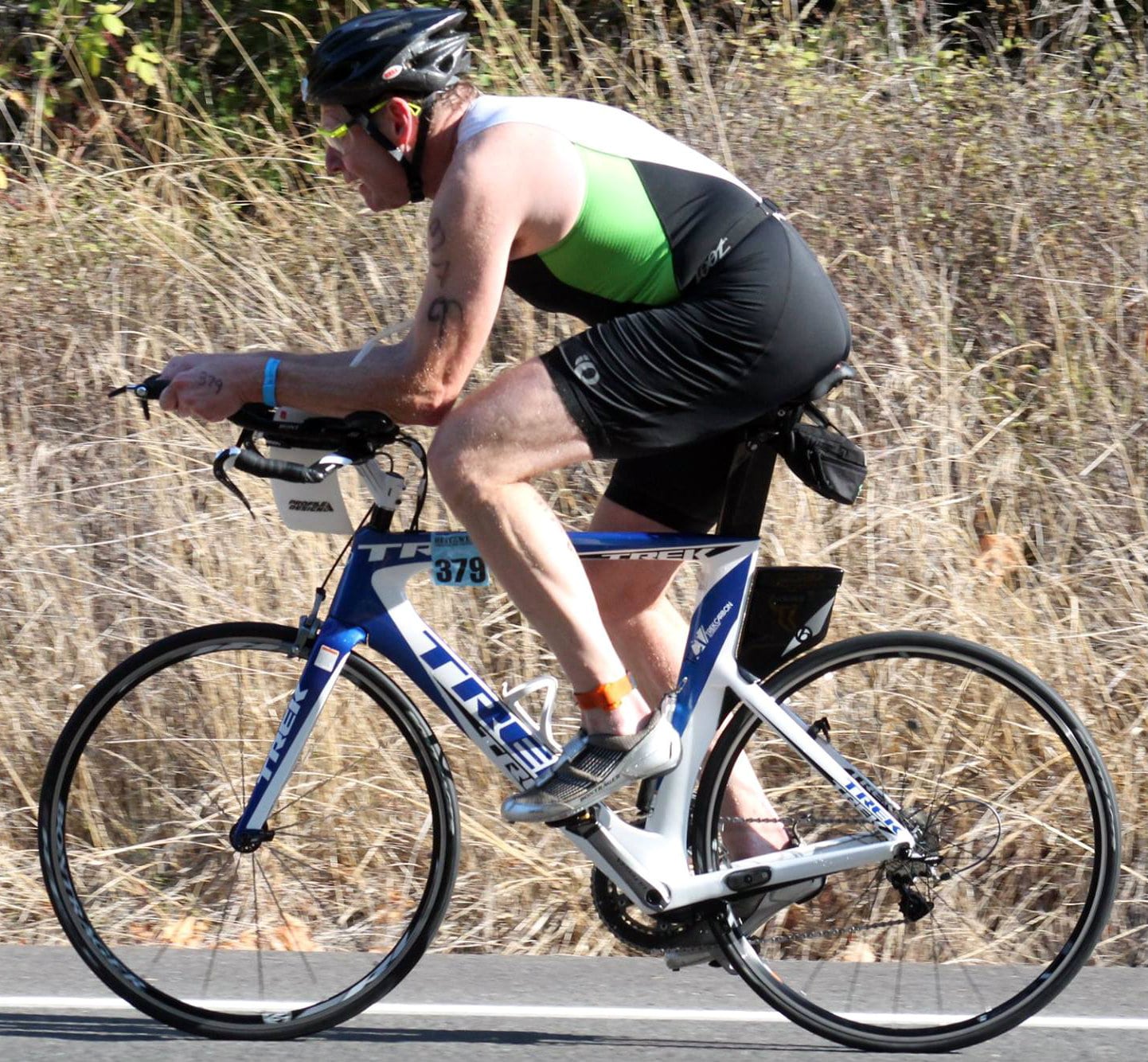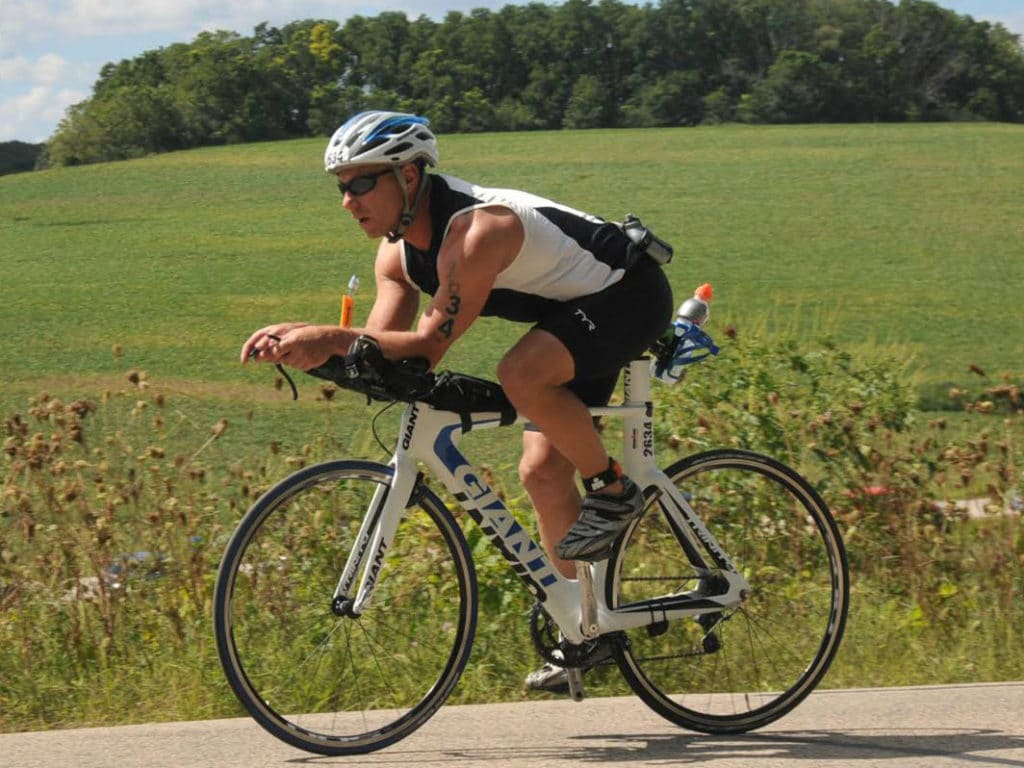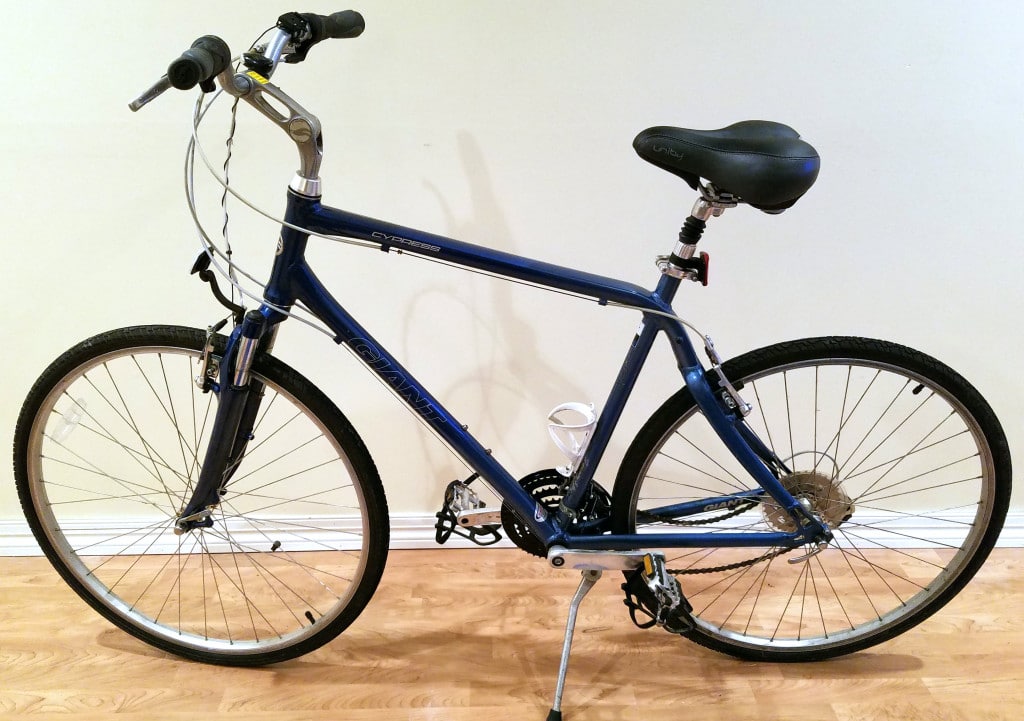Restarting To Bike After A Crash
A bike crash, whether it involves another vehicle or not, can be traumatizing, It can end one’s triathlon career even if the physical wounds heal.
This post is meant to answer a question from a member of the Senior Triathletes community about restarting to bike after an accident with injury.
Restarting to Bike After a Crash Can Be Physical and Emotional
One of Our Community members, Marty Hunter, knows too well how devastating a bike crash can be. She wrote the following when I asked our readers to share topics about which they would like to learn:
“[I am e]xperiencing difficulties recovering from a bike accident. Wondering what other athletes did to cope.”
Here is the background.
Training for Ironman Arizona in 2021, Marty fell on her bike while clipped into the pedals. A femur was broken in the fall, After surgery to repair it, she went through a period of walking with a cane and through many physical therapy appointments.
Even after healing physically, Marty has not recovered emotionally. She has ridden on a trainer but struggled to ride her bike outdoors on roads or trails. She told me “mentally, I’m mush”.
I am rooting for Marty to realize her dream of completing Ironman Arizona. So, I tapped into the experiences of others in our community who have been through this process of recovering from a bike crash. I am hoping their advice will help Marty return to training and racing.
Advice from Coach Jenn Reinhart
The first one to offer help was Senior Triathletes coach Jenn Reinhart. She is familiar with recovering from a bike crash having experienced a few, including being hit by a car, during her triathlon career.
Jenn and Marty spoke, after which Marty shared what she had learned from Jenn.
“Jenn found the right words to cut through my anxiety, especially my fear of being too old [to pursue my Ironman goal]. I tend to look way-way too far ahead instead of celebrating smaller but no less significant triumphs. 140.6 miles [of the Ironman] is huge. However, an 800 yard swim, 25 mile ride, and three to six mile run are totally doable. Each of these is great on it’s own. Being able to thread them together will be a mental podium finish for me.
“The basics are what I need to return to. Just get on the bike without any pressure for distance or pace at this time. Get confidence back for clipping [biking shoes] in and out. Eventually get the legs ready for power drills on the trainer.”
Advice from Other Senior Triathletes
I also spoke with two senior triathletes, Donna Maquire and Gene Peters. Both are Ironman finishers and have been injured in a bike crash.
Donna Maquire
During a triathlon in 2022, an impatient driver decided to turn when he should have waited. Because the bike course made a left turn, Donna was slowing down. These two factors – the car moving at a still low speed while accelerating from a stop and bikers slowing down for the turn – led to Donna ‘bouncing off’ the car’s side.
While her bike was undamaged, her back was fractured in three places. This was the beginning of nearly a year of back-pain as the back bones mended and aggravated discs were treated.
Within a couple of weeks of the accident, Donna was able to ride inside on the trainer. Four months after the crash, she did her first ride outside. This ride was not long and in her neighborhood where traffic is light and slow. She has continued to ride longer as time went by.
Given her experience following the crash, she does most of her training rides on a relatively flat trail near her home. She still struggles with pain when riding on hills.
Donna’s advice for Marty is to get back on a bike or trainer. When outside, never ride alone and always stay alert for cars. She uses a rear view mirror mounted on her glasses and a Garmin Varia radar that detects traffic from behind her.
She added, “Go slow. Increase the distance you ride a little at a time. And, be patient. As you ride more, you can expect your fitness and confidence to improve.”
Gene Peters
Gene Peters (look for his story here soon) told me of his experience while on his first ride after moving to Park City, Utah. During this ride, he collided with a car. In the accident, his back was broken in two places.
How did he get back to riding after healing?
The first time out after recovering, Gene rode less than six miles, enough to get comfortable riding.
Gene says that he is always concerned about cars, but realizes that there are some times when you can’t avoid riding with them around. This is another reason he does a lot of this bike training on the Computrainer his wife bought for him.
My Experience With Clip-In Shoes
I have not been in a serious accident with my bike. However, I have fallen twice during races, once because I was clipped in the pedals and unable to unclip quickly enough.
My first fall, at my Rhode Island triathlon, occurred because of a flat front tire.
I fell a second time, at a triathlon in Arkansas. This time, the fall was because I was not able to unclip my shoes quickly enough after the chain came off and jammed between the wheel and sprocket.
Interestingly, upon returning to the transition area after the bike leg of this triathlon, I saw another racer use traditional pedals with a toe cage (not clip-in) with his triathlon bike. I followed this example for the next several triathlons.
Besides making it easier to get in and out of the pedals, this configuration eliminates time in T2 to put on running shoes.
One qualifier: I am not sure this is valid for longer distance races. However, it can be helpful for restarting to bike after a crash.
Conclusions
A bike crash, especially one with an injury, can produce a major setback in one’s triathlon training. However, in most cases, it need not be career ending.
The concensus among other senior triathletes for restarting biking after a crash is to begin by getting on the bike for short rides. Ride in a safe area. And, if appropriate, use equipment that makes you feel safe, such as pedals and normal running shoes instead of clip-in shoes and pedals.
While you are regaining confidence riding outdoors, build your biking endurance using a bike trainer or stationary bike. Eventually, you will be able to put the bike handling and bike fitness pieces together.
Comments
What advice do you have for restarting to bike after a crash? Share your comment below.
Comments: Please note that I review all comments before they are posted. You will be notified by email when your comment is approved. Even if you do not submit a comment, you may subscribe to be notified when a comment is published.

